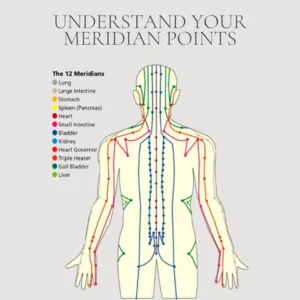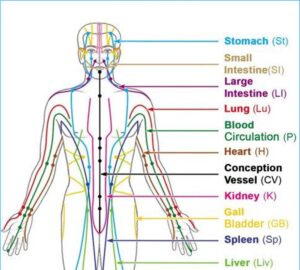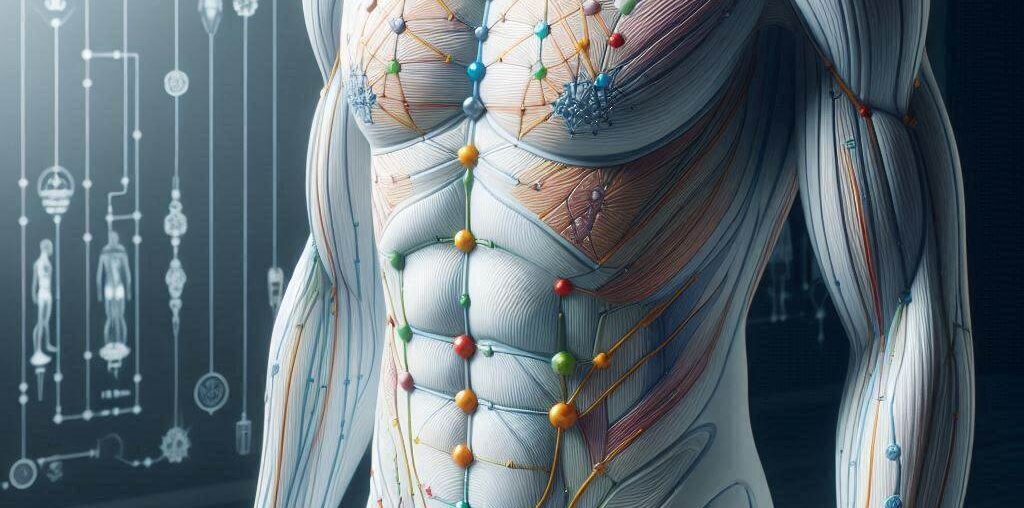Where Are the Meridians in the Human Body and How Do They Relate to the Flow of Energy?
Meridians are a fundamental concept in Traditional Chinese Medicine (TCM), believed to be channels through which the body’s vital energy, called Qi (pronounced “chee”), flows. While they cannot be seen or physically measured, they are thought to correspond to the body’s connective tissue and fascia. Understanding the location of meridians and how they relate to the flow of energy can provide insights into the holistic approach of TCM to health and wellness.
The Twelve Primary Meridians
In TCM, there are twelve primary meridians, each associated with specific organs and functions. These meridians are named after the organ they are associated with, such as the Liver Meridian, the Heart Meridian, and so on. They are divided into Yin and Yang pairs, representing the dualistic nature of energy in the body.
- Yin Meridians: These meridians are associated with the organs that are considered Yin in nature, such as the Heart, Kidneys, Liver, Lungs, Spleen, and Pericardium.
- Yang Meridians: These meridians are associated with the organs that are considered Yang in nature, such as the Small Intestine, Large Intestine, Stomach, Bladder, Triple Burner (Sanjiao), and Gallbladder.
Location of Meridians
While the exact location of meridians is not universally agreed upon, they are generally thought to run along specific pathways in the body. These pathways often correspond to areas where major blood vessels and nerves are located. Here is a general overview of the pathways of the twelve primary meridians:

- Hand Taiyin Lung Meridian: Starts from the chest, runs along the inner arm, and ends at the thumb.
- Hand Yangming Large Intestine Meridian: Starts at the index finger, runs along the outer arm, and ends at the nose.
- Foot Yangming Stomach Meridian: Starts below the eye, runs along the front of the body and leg, and ends at the second toe.
- Foot Taiyin Spleen Meridian: Starts at the big toe, runs along the inner leg, and ends at the chest.
- Hand Shaoyin Heart Meridian: Starts at the armpit, runs along the inner arm, and ends at the little finger.
- Hand Taiyang Small Intestine Meridian: Starts at the little finger, runs along the back of the arm and shoulder, and ends at the ear.
- Foot Taiyang Bladder Meridian: Starts at the inner eye, runs along the back of the body and leg, and ends at the small toe.
- Foot Shaoyin Kidney Meridian: Starts at the sole of the foot, runs along the inner leg, and ends at the chest.
- Hand Jueyin Pericardium Meridian: Starts at the chest, runs along the inner arm, and ends at the tip of the middle finger.
- Hand Shaoyang Sanjiao Meridian: Starts at the tip of the ring finger, runs along the back of the arm and shoulder, and ends at the eyebrow.
- Foot Shaoyang Gallbladder Meridian: Starts at the outer eye, runs along the side of the body and leg, and ends at the fourth toe.
- Foot Jueyin Liver Meridian: Starts at the big toe, runs along the inner leg, and ends at the chest.
Flow of Energy in the Meridians

In TCM, health is believed to be maintained when the flow of Qi is balanced and unobstructed along the meridians. Various factors, such as lifestyle, emotions, diet, and environment, can influence the flow of Qi. When Qi becomes blocked or imbalanced, it is believed to result in illness or discomfort.
Practices like acupuncture, acupressure, and Qigong are used in TCM to help restore the balance and flow of Qi in the meridians. Acupuncture involves the insertion of thin needles into specific points along the meridians to stimulate and balance the flow of Qi. Acupressure applies pressure to these points using the fingers or other tools to achieve similar effects.
In conclusion, while the existence and exact nature of meridians are still debated in Western medicine, they play a significant role in TCM theory and practice. Understanding the location of meridians and their relationship to the flow of energy provides valuable insights into the holistic approach of TCM to health and wellness.


Add your first comment to this post